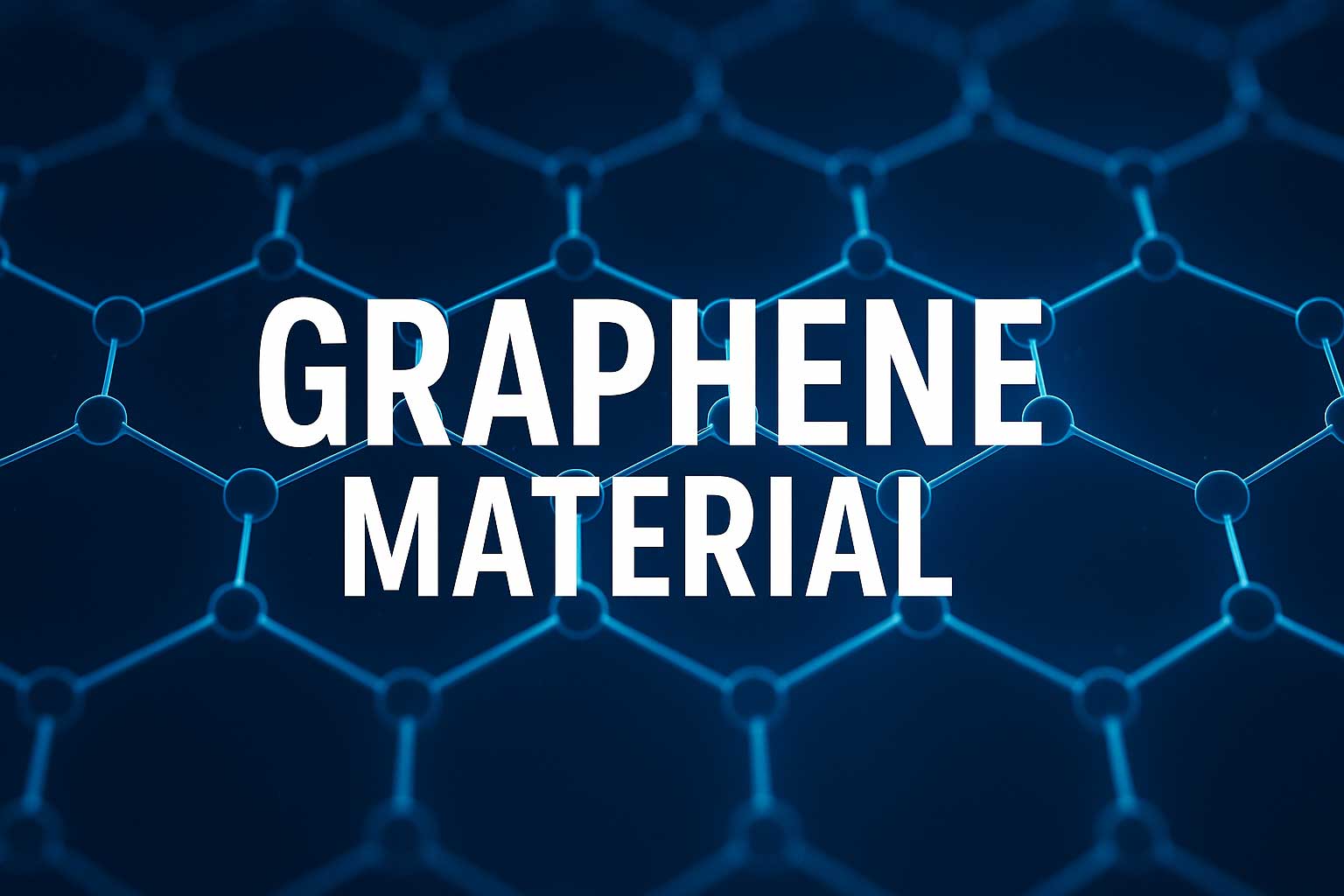Graphene Material: The Strongest, Thinnest, and Smartest Carbon Material
Graphene material is a single-atom-thick layer of carbon that has redefined how we think about strength, conductivity, and innovation in modern science.
In this guide, we explore what graphene material is, its incredible properties, the global graphene based material market, and how this ultra-light yet ultra-strong material is shaping the future of technology.
What Is Graphene Material?
Graphene material is made of carbon atoms arranged in a two-dimensional hexagonal lattice — often called a honeycomb structure. It's the basic building block for other carbon-based forms such as graphite, carbon nanotubes, and fullerenes. Although only one atom thick, graphene material is stronger than steel, harder than diamond, and conducts electricity better than copper.
Since its discovery in 2004, graphene has become the foundation of the new era of nanotechnology. Researchers continue to explore its potential as the graphene strongest material known to science, capable of revolutionizing industries from electronics to energy storage.
Graphene Material Properties
The unique combination of mechanical, thermal, and electrical properties makes graphene material one of the most extraordinary substances ever discovered. Below are its most notable graphene material properties:
- Strength: Over 200 times stronger than steel, yet extremely lightweight.
- Conductivity: Superior electrical and thermal conductivity, making it ideal for circuits, chips, and sensors.
- Transparency: Absorbs less than 3% of visible light, perfect for flexible, transparent electronics.
- Elasticity: Can stretch up to 20% without damage, suitable for flexible and wearable technologies.
- Impermeability: Even the smallest gases cannot pass through material material graphene structures.
Production of Graphene Based Material
There are multiple methods to produce graphene based material, each suited for specific industries and scales of production:
- Mechanical Exfoliation: The original "Scotch tape" method, ideal for small research samples.
- Chemical Vapor Deposition (CVD): Used to grow high-quality graphene films for electronics and semiconductors.
- Liquid Phase Exfoliation: Produces graphene flakes suspended in solvents, used in coatings and inks.
- Reduction of Graphene Oxide (rGO): A cost-effective method to create conductive graphene at industrial scale.
The Graphene Based Material Market
The global graphene based material market is experiencing rapid growth as industries integrate graphene into commercial applications. According to market research reports, the industry is expected to expand at a CAGR of over 20% during the next decade, driven by demand in energy storage, electronics, aerospace, and advanced composites.
North America, Europe, and Asia-Pacific lead in graphene material production and research, with major companies investing in scalable manufacturing methods. As graphene's cost decreases and its benefits become more widely understood, analysts predict widespread adoption in electric vehicles, medical devices, and wearable technologies.
Applications of Graphene Material
The versatility of graphene material allows it to be used across various sectors, from electronics to sustainability:
1) Energy and Battery Technology
Graphene is essential in next-generation energy storage systems. In graphene battery designs, it enhances charge capacity, lifespan, and safety, providing faster charging and higher power density.
2) Electronics and Computing
As the graphene strongest material with exceptional conductivity, it's being used to develop transistors, sensors, and chips that outperform traditional silicon. Its flexibility also supports the creation of bendable smartphones and foldable displays.
3) Composite and Structural Materials
When mixed with plastics or metals, material material graphene compounds improve tensile strength, corrosion resistance, and heat dissipation. These composites are used in aircraft, automotive components, and sports gear.
4) Biomedical and Environmental Use
In healthcare, graphene's surface area and reactivity allow for efficient drug delivery, biosensors, and antimicrobial coatings. Environmental scientists also use graphene oxide membranes for desalination and pollution control.
Advantages and Challenges
| Advantages | Challenges |
|---|---|
| Unparalleled strength and lightness | High production costs for defect-free sheets |
| Superior electrical and thermal conductivity | Scaling up manufacturing remains complex |
| Sustainable, carbon-based composition | Standardization in the graphene based material market is ongoing |
The Future of Graphene Material
The future of graphene material lies in its integration with renewable energy systems, wearable electronics, and smart infrastructure. With breakthroughs in cost reduction and mass production, it could become the foundation for the next wave of sustainable technology.
As innovation accelerates, the graphene based material market is expected to play a central role in global manufacturing — replacing traditional materials in construction, energy, and electronics.
Summary
Graphene material stands as the world's strongest and most versatile carbon-based substance. Its unique combination of flexibility, conductivity, and durability makes it a critical component for modern innovations. As research continues and industrial adoption expands, graphene-based materials are set to transform industries on a global scale.
FAQ
Why is graphene considered the strongest material?
Answer: Graphene's atomic lattice makes it the graphene strongest material ever tested — about 200 times stronger than steel, yet lightweight and flexible.
What are the key graphene material properties?
Answer: Graphene material properties include high strength, superior conductivity, transparency, elasticity, and chemical stability, all from a single layer of carbon atoms.
What is the graphene based material market size?
Answer: The global graphene based material market is projected to grow rapidly in the coming years due to its increasing use in energy storage, composites, and electronics.
Is graphene environmentally friendly?
Answer: Yes. Graphene is made from carbon and can be produced sustainably from biomass or recycled carbon sources, making it a green alternative to many industrial materials.
Where can graphene material be used?
Answer: It is used in batteries, sensors, water filters, medical devices, and high-performance coatings, among many other industries.

